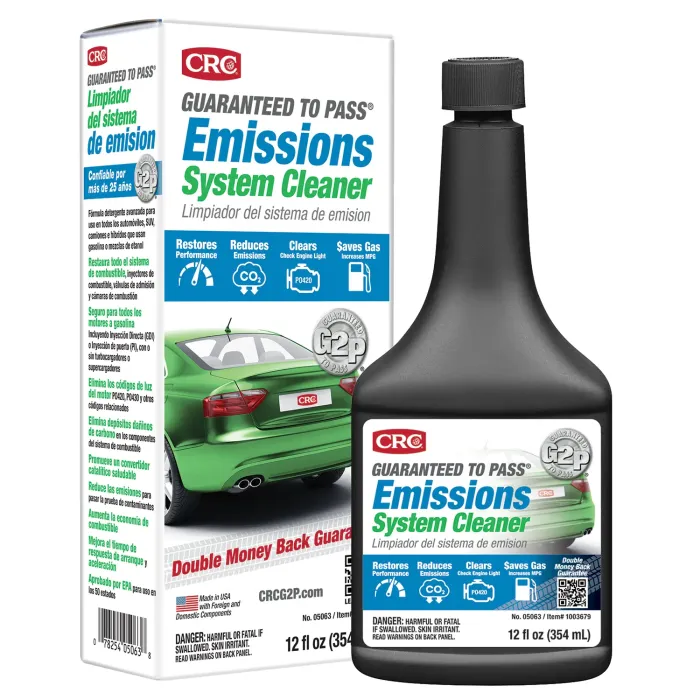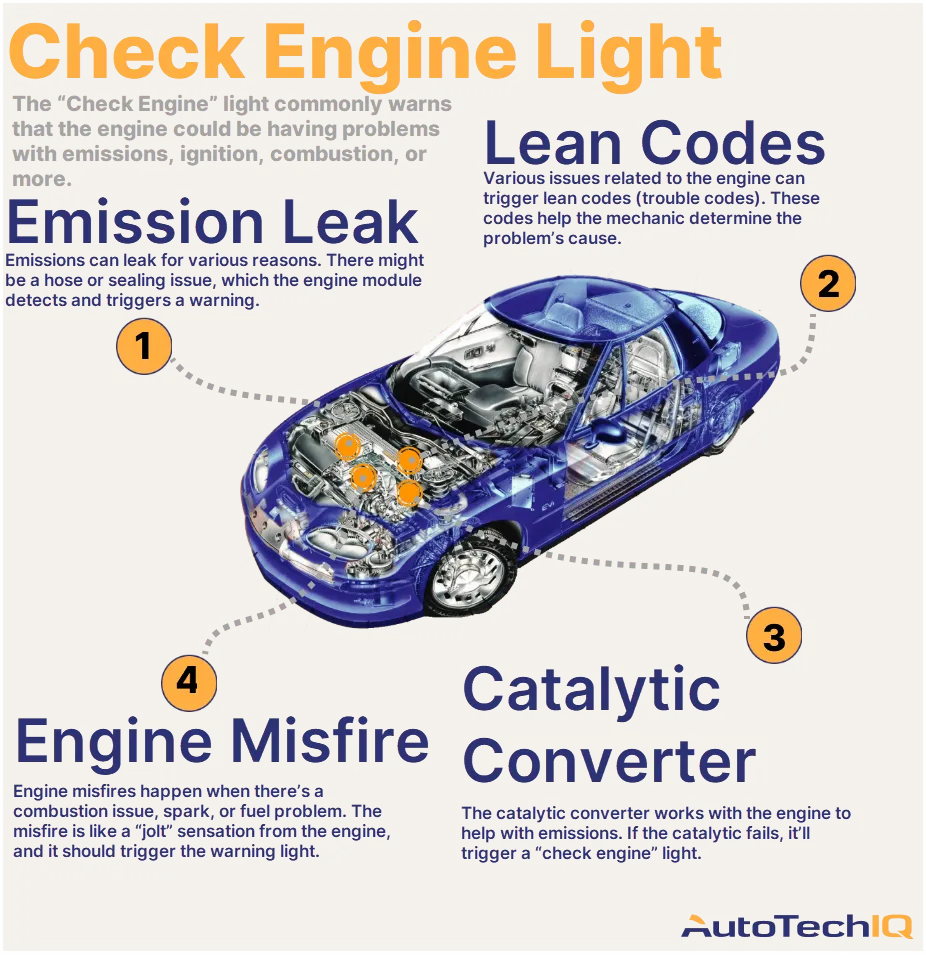You’re getting ready to take your car for its smog test, but you notice your brake light is on. Suddenly, you’re filled with questions and a bit of anxiety.
Will this seemingly small issue affect the outcome of your smog check? You’re not alone in wondering about this. Many drivers face the same concern and it’s important to know the facts. Understanding how your car’s systems interact can save you time, money, and frustration.
You’ll discover whether a brake light can make or break your smog test results. Stick around to find out how you can ensure a smooth smog testing experience.
Smog Check Basics
A brake light on doesn’t directly affect a smog check. Smog tests focus on emissions and not safety lights. Repairing the brake light is essential for safe driving, but emissions are the main concern for passing smog checks.
Understanding the basics of a smog check can save you time and money, especially if you’re concerned about whether your car will pass when the brake light is on. Many drivers have faced the anxiety of approaching a smog station, wondering if their vehicle will meet the standards. Let’s dive into the essential elements that make up a smog check and clarify some common misconceptions.Purpose Of Smog Checks
Smog checks are designed to reduce air pollution. They ensure vehicles meet emission standards set by environmental agencies. By passing a smog check, your car contributes less to air pollution, promoting cleaner air for everyone. These inspections are not just bureaucratic hurdles. They play a crucial role in maintaining our environment and public health. The goal is to identify cars that emit too much pollution and get them fixed.Components Tested
During a smog check, several components of your vehicle are examined. Typically, the test will assess the exhaust system, fuel system, and ignition system. The focus is on how efficiently your car burns fuel and controls emissions. Your car’s On-Board Diagnostics (OBD) system is crucial in this process. It monitors engine performance and can trigger warning lights if there’s an issue. This is where your brake light concern comes into play. If your brake light is on, it may not directly affect the smog test, but it could indicate other issues. A malfunctioning brake system might suggest broader electrical or system problems. It’s important to address these issues before heading to the smog station. Have you ever ignored a warning light, only to face a bigger problem later? Addressing these signs early can save you from unexpected failures. Always ensure your car is in good working order before any inspection. Understanding these basics helps you prepare your car and reduce the stress of the smog check process. Remember, a well-maintained car not only passes smog checks but also runs more efficiently and safely.
Credit: www.aamcobayarea.com
Impact Of Brake Light On Smog Test
Car owners often worry about passing a smog test. An illuminated brake light can add to these worries. But does it affect the emissions test? Understanding the connection between brake lights and smog tests is essential.
Brake Light Functionality
Brake lights signal when the car is slowing down. They alert drivers behind you to reduce speed. A functioning brake light is vital for safety. It ensures others know your driving intentions.
Relation To Emissions
Brake lights have no direct link to emissions. They do not impact the car’s exhaust system. Smog tests focus on the emissions from the engine. A faulty brake light usually doesn’t affect this.
However, a brake light issue could signal other problems. Some modern cars use the same system to detect various faults. A check engine light might also appear. This could affect the smog test results.
Common Reasons For Brake Light Issues
Having the brake light on can be alarming. It signals potential issues in your car. Understanding why it’s on is crucial. Addressing these problems can prevent further damage. Let’s explore some common reasons why your brake light might be on.
Wiring Problems
Wiring issues are a common cause of brake light problems. Faulty wires can disrupt the electrical flow. This may cause the light to stay on. Over time, wires can wear out or become damaged. Regular checks can prevent these issues.
Bulb Malfunctions
A malfunctioning bulb can lead to brake light issues. Sometimes, the bulb may burn out. This can cause the light to stay on. Replacing the bulb usually solves the problem. It’s a simple fix that you can do yourself.
Sensor Failures
Sensors play a vital role in the brake system. A failing sensor can trigger the brake light. They can wear out or get damaged. Regular maintenance can help detect sensor issues early. Addressing them promptly can prevent bigger problems.

Credit: www.crcindustries.com
Preparing For A Smog Test
A brake light on doesn’t always mean your car will fail a smog test. While the smog check focuses on emissions, maintaining a well-functioning vehicle is crucial. Ensure other systems are in good shape to increase your car’s chances of passing the test.
Preparing for a smog test involves more than checking emissions. Many drivers wonder if their car will pass if a brake light is on. Understanding the impact of dashboard warnings is crucial. Smog tests focus mainly on emissions, but other issues can affect results. Addressing any warning lights is essential to avoid surprises.Addressing Brake Light Problems
A brake light warning can signal various issues. It might indicate low brake fluid or worn-out brake pads. These problems won’t directly affect smog test results. However, a fully functional car is always better. Fixing brake light issues ensures safety. It also prevents distractions during the test. Mechanics can easily diagnose and resolve these problems.Ensuring Emissions Compliance
Emissions compliance is the core of smog tests. Vehicles must meet state-set standards. Regular maintenance is key to passing. Check the engine, exhaust system, and catalytic converter. Repairs might be needed if emissions are too high. A clean air filter improves engine performance. It also helps reduce emissions. Preparing ahead ensures smooth testing.Steps To Pass Smog Test With Brake Light On
Facing a smog test with your car’s brake light on? This can be a concern for many vehicle owners. While a brake light issue doesn’t directly affect emissions, it may signal underlying problems. Addressing these issues can help ensure your car passes the smog test. Here are some steps that might help you pass the test.
Temporary Fixes
Begin by checking the brake fluid level. Low fluid can trigger the brake light. Refill it to the recommended level if needed. Inspect the brake light switch located near the brake pedal. Sometimes, the switch may be misaligned. Adjust it to see if the light turns off. Check the brake light bulbs. A burnt-out bulb might cause the light to stay on. Replace any faulty bulbs promptly.
Professional Inspection
Consider a professional inspection if the brake light remains on. A mechanic can diagnose the issue accurately. They might find problems with the anti-lock braking system. Faulty sensors or wiring issues may also be the cause. Addressing these problems is vital. A professional inspection ensures your car is roadworthy and ready for the smog test. Regular maintenance can prevent future issues.
Preventative Measures
A brake light issue may not directly affect smog test results. Addressing brake light concerns ensures your vehicle meets all safety regulations. Check all systems for optimal performance before the test.
Preventative measures play a crucial role in ensuring your car remains roadworthy and passes the smog test, even if the brake light is on. It’s easy to overlook minor issues, but addressing them promptly can save you from costly repairs and unexpected failures. Here, we’ll explore some practical strategies that can help you stay ahead of potential problems.Regular Maintenance
Regular maintenance is your car’s best friend. Think of it as a routine health check-up for your vehicle. Changing oil, checking tire pressure, and inspecting brakes are just a few tasks that keep your car running smoothly. Take my friend, Jake. He thought skipping his yearly maintenance was saving money, but his brake light came on during a crucial smog test. A quick brake fluid check could have prevented the hassle. Don’t let small issues snowball into major problems. A stitch in time saves nine, right?Monitoring Warning Lights
Warning lights are your car’s way of communicating. Ignoring them can be like ignoring a smoke alarm. The brake light, for instance, signals there might be a problem with your braking system. Pay attention to these alerts. They are more than just a flickering nuisance. Imagine your car is like your phone; you’d never ignore a battery low warning, would you? Similarly, timely action on warning lights can prevent your car from failing the smog test. So, next time a light pops up, ask yourself: Is this something I can fix now to avoid bigger issues later?
Credit: www.autotechiq.com
Frequently Asked Questions
Will My Car Pass Smog With The Brake Light On?
A brake light on doesn’t affect smog test results. Smog checks focus on emissions, not brake system warnings. Ensure your vehicle meets emission standards for a successful test.
What Lights Will Fail The Emissions Test?
Lights like check engine, malfunction indicator, or service engine soon can fail the emissions test. Ensure all dashboard lights are off before testing. These lights indicate potential issues that might affect emissions performance, leading to test failure. Regular maintenance can prevent such problems and ensure compliance.
Is It Okay To Drive A Car With The Brake Light On?
Driving with the brake light on can indicate a problem. It may signal low brake fluid or a faulty brake system. Ignoring it can lead to dangerous situations. Always address brake light issues promptly to ensure safety. Regular maintenance helps prevent such issues.
Prioritize your safety and get it checked immediately.
Does Abs Light Fail The Emissions Test?
An ABS light typically doesn’t affect emissions tests. Emissions tests focus on exhaust pollutants, while ABS pertains to braking systems. Check local regulations, as requirements may vary. Always ensure your vehicle is in optimal condition for testing.
Conclusion
Understanding smog test requirements is essential for car owners. A brake light on usually won’t affect smog results. Smog tests focus on emissions, not the brake system. But, always ensure your car is in top shape. Fixing any issues is wise.
Safety first. Regular maintenance can prevent unexpected problems. It’s better to be prepared than surprised. Consult a mechanic if unsure. They can provide clarity. Keep your car healthy for a smoother drive. Always prioritize safety and efficiency. This ensures peace of mind and compliance with regulations.
